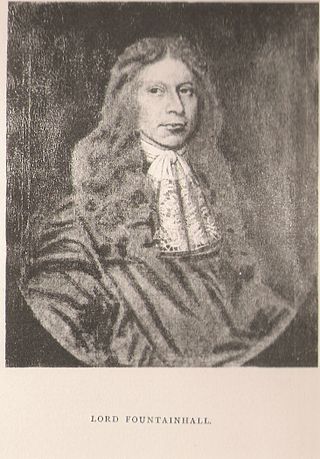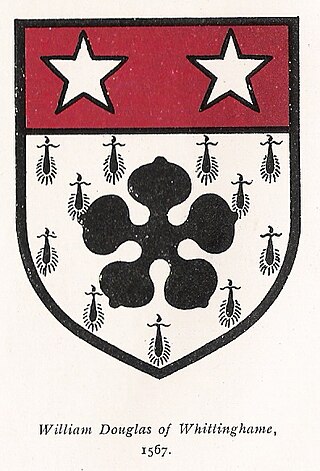The order of precedence in Scotland was fixed by Royal Warrant in 1905. Amendments were made by further Warrants in 1912, 1952, 1958, 1999 to coincide with the establishment of the Scottish Parliament and Scottish Government and most recently in 2012.

The Court of Session is the highest national court of Scotland in civil cases. The court was established in 1532 to take on the judicial functions of the royal council. Its jurisdiction overlapped with other royal, state and church courts but as those were disbanded, the role of the Court of Session ascended. The Acts of Union establishing the United Kingdom provided that the court will "remain in all time coming".

The Lord Justice Clerk is the second most senior judge in Scotland, after the Lord President of the Court of Session. The current Lord Justice Clerk is Leeona Dorrian, Lady Dorrian, who was appointed to the position on 13 April 2016. in June 2024 Lady Dorrian has announced her intention to retire from judicial office on 3 February 2025.

Sir David Dalrymple, Lord Hailes, 3rd Baronet of Hailes was a Scottish advocate, judge and historian, born in Edinburgh.

Charles Erskine also spelled Areskine, of Tinwald and Barjarg, Dumfries, and Alva, Clackmannan was Lord Advocate, a Scottish judge, and a politician who sat in the House of Commons from 1722 to 1742.

The College of Justice includes the Supreme Courts of Scotland, and its associated bodies.

James Erskine, Lord Grange was a Scottish advocate, judge and politician. He served as Lord Justice Clerk and a Lord of Justiciary.

The Tron Kirk is a former principal parish church in Edinburgh, Scotland. It is a well-known landmark on the Royal Mile. It was built in the 17th century and closed as a church in 1952. Having stood empty for over fifty years, it was used as a tourist information centre for several years in the mid 2000s and, more recently, was the site of the Edinburgh World Heritage Exhibition and John Kay’s book and gift shop.

Sir John Lauder of Fountainhall, 2nd Baronet, Lord Fountainhall was one of Scotland's leading jurists who remains an oft-consulted authority. He was knighted in 1680 and matriculated his Arms with the Lyon Court on 15 June 1699.
Sir Lewis Bellenden of Auchnole and Broughton was a Scottish lawyer, who succeeded his father as Lord Justice Clerk on 15 March 1577.

William Douglas of Whittingehame was a Senator of the College of Justice at Edinburgh, and a Royal conspirator.

Greyfriars Kirkyard is the graveyard surrounding Greyfriars Kirk in Edinburgh, Scotland. It is located at the southern edge of the Old Town, adjacent to George Heriot's School. Burials have been taking place since the late 16th century, and a number of notable Edinburgh residents are interred at Greyfriars. The Kirkyard is operated by the City of Edinburgh Council in liaison with a charitable trust, which is linked to but separate from the church. The Kirkyard and its monuments are protected as a category A listed building.
Sir James Foulis, was a Scottish judge and Senator of the College of Justice.
Jim, Jimmy, Jamie, or James Lawson may refer to:
Francis Bothwell of Edinburgh, Lord of Session, was a Scottish merchant, landowner, judge and politician. As a university graduate, he was called Master Francis Bothwell, or "Dominus" in Latin documents; however, this has been misunderstood by some writers, so he is occasionally, inaccurately, referred to as "Sir" Francis Bothwell.
David MacGill, McGill or Makgill, Lord Cranston Riddell (1532–1595) was a 16th-century Scottish judge and Senator of the College of Justice and Lord Advocate of Scotland from 1582 to 1595.
John Bothwell of Auldhamer, Lord Holyroodhouse (c.1550–1609) was a 16th-century Scottish judge and Senator of the College of Justice residing at Holyrood House prior to it becoming a royal palace.
Patrick Nisbet, Lord Eastbank (1565–1648) was a long-lived 17th century Scottish landowner, judge and Senator of the College of Justice.
Richard Lawson of High Riggs, was a Scottish landlord, diplomat and lawyer who was made Lord Provost of Edinburgh in 1492 and Justice-Clerk-General to the King in 1504. He was the father of James Lawson, an MP of the Scottish Parliament, and the grandfather of James Lawson, Lord Lawson, who was made Lord Provost of Edinburgh in 1532.








